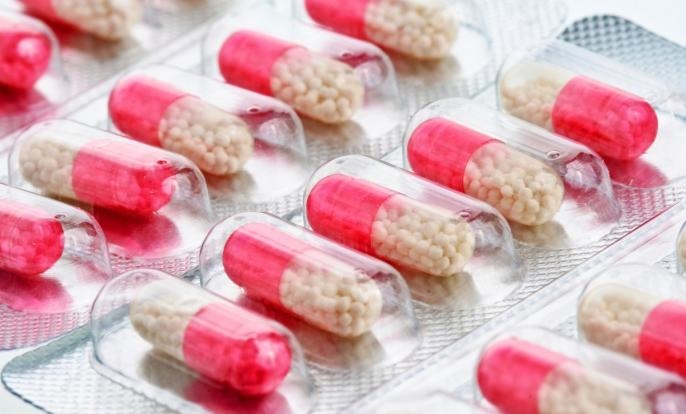The Alarming Truth About Antibiotics
Thanks to antibiotics, we no longer worry that common infections will kill us—or our kids. But the overprescribing of antibiotics is causing our bodies to become immune to them, meaning when we really need them, they might not work. This condition, called antibiotic resistance, could bring us back to the dark ages of medicine. And a recent report by a leading voice of the World Health Organization (WHO) warns that the problem may be worse than we ever thought.
“Things as common as strep throat or a child’s scratched knee could once again kill,” warns WHO’s Director-General Margaret Chan, MD. Without antibiotics, she says, “some sophisticated interventions, like hip replacements, organ transplants, cancer chemotherapy and care of preterm infants, would become far more difficult or even too dangerous to undertake.” She says this could be the end of modern medicine as we know it.
“For those of us in the natural health field, we’ve been sounding an alarm about the dangers of antibiotic resistance for decades,” says holistic pharmacist and best-selling author Sherry Torkos. “Obviously it’s been a silent alarm, because it has not been heard by many pharmaceutical companies, prescribing physicians or patients.”
Twelve years ago Stuart B. Levy, MD, of Tufts University School of Medicine told CNN, “We have patients in the United States dying from infections that are untreatable. That is unthinkable.” And the problem has only gotten worse since then.
What do antibiotics do?
Antibiotic medications are used to treat harmful bacterial infections such as streptococcus (strep), staphylococcus (staph) and E. coli. “Antibiotics are like firearms: They are used to kill hordes of offending organisms until the cavalry, the immune system, arrives and can finish the battle,” explains emergency room physician and Wellness Times Editorial Advisor, Bill Benda, MD. “And like firearms, some antibiotics are big and powerful and some are small and relatively weak, such as topical ointments. The trick is to pick one that will do the job with little to no collateral damage.” According to Torkos, broad-spectrum antibiotics do the most damage because they are not targeted to the specific bacteria. Unfortunately, those are the most frequently prescribed antibiotics.
Benda says antibiotics should not be used to treat viral infections such as the common cold or flu. Even a horrible cough that is not caused by strep bacteria will not benefit from an antibiotic. Not only will the antibiotic be ineffective, it may actually be harmful.
“A big part of the problem with antibiotic resistance is that patients demand an antibiotic when they are not feeling well, and doctors sometimes succumb to the pressure,” says Torkos. “As a pharmacist, I have seen the unnecessary prescribing of antibiotics increase dramatically. And overprescribing is just the tip of the iceberg when it comes to issues of antibiotic resistance.”
Can new antibiotics help?
To combat the growing problem of antibiotic resistance, new drugs have been created. But according to Chan, even the newest antibiotics can’t tackle the latest resistant strains of bacteria.
“Hospitals have become hotbeds for highly resistant pathogens … increasing the risk that hospitalization kills instead of cures,” said Chan at a March 2012 conference held in Copenhagen, Denmark, on combating antibiotic resistance. “These are end-of-the-road pathogens that are resistant to last-line antimicrobials.”
Why not just develop more antibiotic drugs? According to Chan, the antibiotic drug pipeline is “virtually dry … the cupboard is nearly bare,” because pharmaceutical companies lack incentive to bring a new antibiotic to the market and then have it soon become ineffective. The reason they become ineffective so quickly, she says, is the “inability to combat the gross misuse of these medicines.”
Chan also cites the overuse of antibiotics in the food industry as a key contributor to the problem of antibiotic resistance. She says stronger regulations restricting the use of antibiotics in food products need to be in place.
Another problem Chan cites is the sale and distribution of substandard and counterfeit antibiotic medications. “In many countries, the pharmaceutical industry is the principal source of prescribing information for doctors,” says Chan. “Counterfeit and substandard antibiotics abound.”
What’s the solution?
Most experts agree that consumers can do several things to help turn the tide against antibiotic resistance:
- Don’t pressure your doctor to prescribe an antibiotic to treat a viral infection such as the flu.
- If you are prescribed an antibiotic, use it exactly as directed. Take the antibiotic for the entire time prescribed. If the directions say no alcohol, don’t drink alcohol while taking the antibiotic. Alcohol will dramatically reduce the effectiveness of some antibiotics.
- Purchase organic meats and dairy to reduce dietary exposure of antibiotics in the food supply.
- Take probiotics on a consistent basis. Antibiotics not only kill bad bacteria, they kill good bacteria as well, making people more prone to illness. Probiotics are the good bacteria that strengthen immunity and provide a wide range of health benefits. They also need to be replenished regularly through foods and dietary supplements.
Remember, you can do your part in helping to prevent antibiotic resistance.
By: Karolyn A. Gazella Karolyn is the publisher of Wellness Times. She is also the publisher of Natural Medicine Journal, a peer-reviewed e-journal for healthcare professionals. Karolyn has been publishing wellness information for nearly 20 years and is the author or coauthor of several books including her latest, Five to Thrive: Your Cutting-Edge Cancer Prevention Plan (Active Interest Media, 2011). For more information, visit Five2Thrive.com.
April 19th, 2012 Topics: Research Updates Categories: Marquee You May Also Be Interested Inhttp://www.wellnesstimes.com/articles/alarming-truth-about-antibiotics

 RSS Feed
RSS Feed